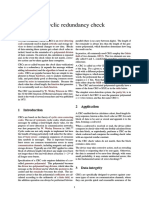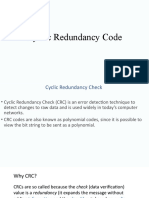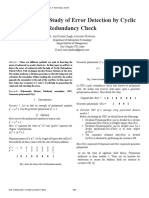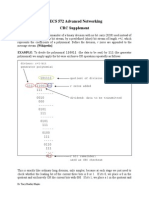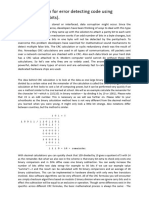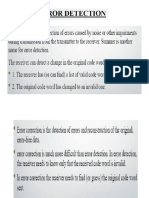0% found this document useful (0 votes)
55 views1 pageData Encoding: Polynomial Division: Transmission: Verification
Cyclic Redundancy Check (CRC) is an error-detecting code used to ensure data integrity in computer networks by appending a CRC value to transmitted data. The process involves data encoding, polynomial division, and verification at the receiver's end to check for discrepancies. CRC is commonly used in network communication protocols, storage devices, and data compression formats due to its efficiency in detecting transmission errors.
Uploaded by
tech4fresherssCopyright
© © All Rights Reserved
We take content rights seriously. If you suspect this is your content, claim it here.
Available Formats
Download as ODT, PDF, TXT or read online on Scribd
0% found this document useful (0 votes)
55 views1 pageData Encoding: Polynomial Division: Transmission: Verification
Cyclic Redundancy Check (CRC) is an error-detecting code used to ensure data integrity in computer networks by appending a CRC value to transmitted data. The process involves data encoding, polynomial division, and verification at the receiver's end to check for discrepancies. CRC is commonly used in network communication protocols, storage devices, and data compression formats due to its efficiency in detecting transmission errors.
Uploaded by
tech4fresherssCopyright
© © All Rights Reserved
We take content rights seriously. If you suspect this is your content, claim it here.
Available Formats
Download as ODT, PDF, TXT or read online on Scribd
/ 1












